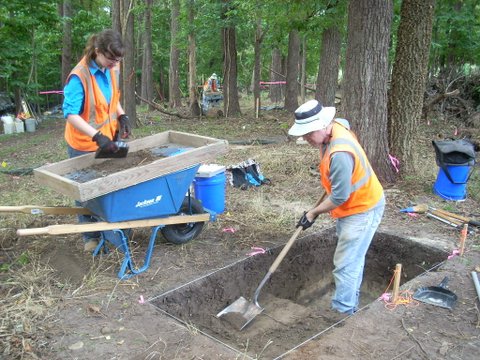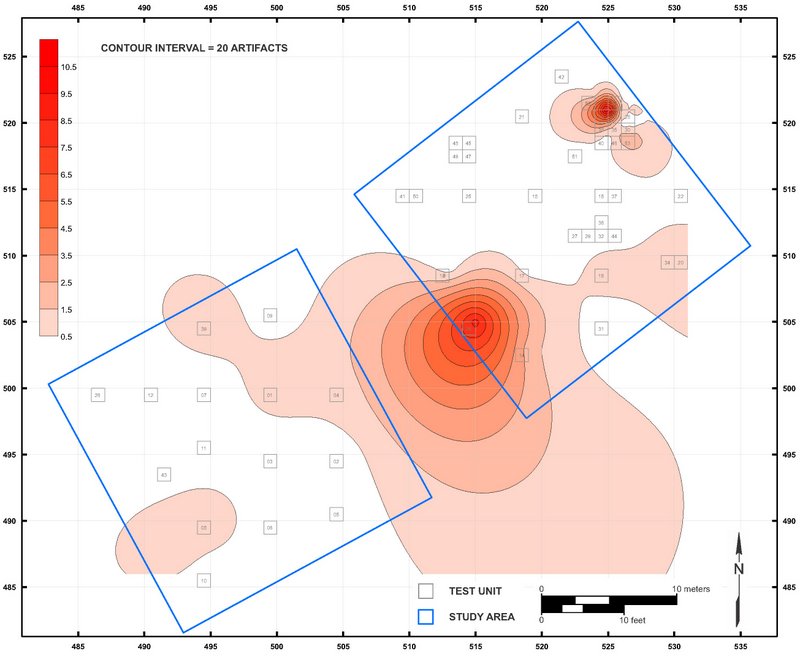Test Unit Excavation
| Data recovery excavations typically focus on exposing archaeological features. These intrusions in the soil made by humans include the traces of posts or foundations that supported a building, cellars, and wells, for example. Often, these features stand out from surrounding subsoil once the top layer of plowed soil, mixed by centuries of tilling for crop cultivation, has been removed. In the case of Site 44JC1140, though, it was apparent that the upper layer was undisturbed and could reveal much about the locations of specific activity areas and different periods of use of the site. To sample this upper soil, the archaeologists dug square test units at regular intervals across the site. When the test unit results showed a significant Civil War presence on the site, an additional layer of sampling was done with a metal detector along regularly spaced paths across the site. Since specifically military artifacts tend to be made of metal (bullets, uniform accessories, weapon parts, etc.), areas of intensive use by soldiers can be identified in the artifact density patterns that result from the metal detector survey (see map below). |  |
|
|
Combining the results of the test units and the metal detector sample, the archaeologists were able to produce an artifact density map of Site 44JC1140 that identified the areas of most intensive military use (marked by darker shading on the site map above). |
Above: By gradually removing the soil within a test unit with flat shovels and trowels, archaeologists can document the natural stratigraphy and features, and keep separate drawings, notes, and bags of artifacts from each layer. While one archaeologist removes the soil and places it in a screen of quarter inch wire mesh, another carefully sifts the soil into a wheelbarrow and retrieves artifacts. Below: During the metal detector survey, the archaeologists proceeded along a series of parallel lines in order to achieve an even sample across the site. Each metal detector “hit” was assigned a number, marked with a pin flag for mapping, and the retrieved artifact placed in a bag with notations to indicate the location of the find. |
|
















